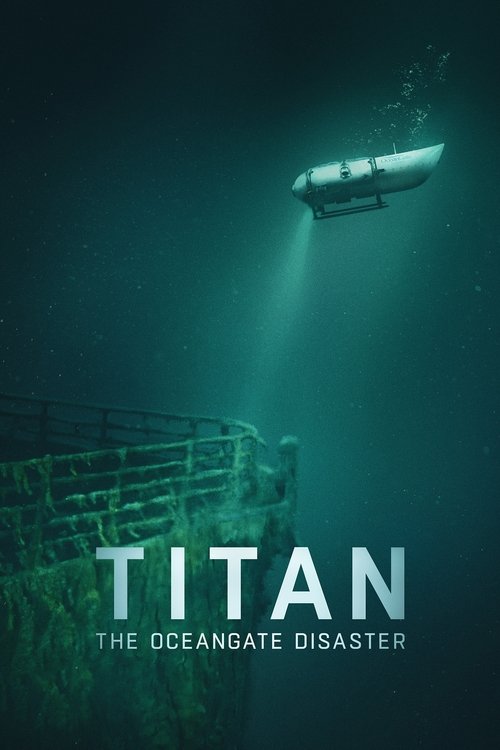
Ask Your Own Question
What is the plot?
Sorry, we aren't able to watch and write up a full detailed plot yet. Check back in a few days.
What is the ending?
The movie "Titan: The OceanGate Submersible Disaster" ends with the catastrophic implosion of the Titan submersible during its deep-sea expedition, resulting in the death of all five occupants. The film closes by showing the recovery of debris and the presumed human remains, underscoring the tragic consequences of the mission.
Expanding on the ending scene by scene:
The final sequence begins as the Titan submersible, piloted by CEO Stockton Rush along with four other passengers, descends toward the Titanic wreck site. The vessel is equipped with monitoring systems and multiple backup safety features, including ballast release mechanisms intended to bring it to the surface in emergencies. However, as the submersible reaches extreme depths--over 330 atmospheres of pressure--the integrity of its carbon-fiber hull is compromised.
Suddenly, the hull fails catastrophically in an implosion that occurs within milliseconds, instantly killing all five people inside. The implosion is so rapid that the occupants have no awareness or time to react. The film depicts this moment with stark finality, emphasizing the overwhelming force of the ocean at such depths.
Following the implosion, the support ship on the surface, which had been tracking Titan's position and sending navigational updates, loses contact with the submersible. Rescue efforts are launched, but the vessel is lost.
In the aftermath, the movie shows the recovery operation where engineers retrieve debris from the ocean floor. Among the wreckage, the absence of the acrylic viewing window and the fragmented carbon-fiber hull pieces are noted, supporting the conclusion that the hull failure was the primary cause of the disaster.
The film concludes by revealing the presumed human remains recovered during the salvage, marking the somber end of the expedition and the lives of Stockton Rush and the other four passengers. The closing scenes underscore the tragic cost of ambition and the unforgiving nature of deep-sea exploration.
Each main character aboard the Titan--Stockton Rush, Emily Hammermeister, David Lochridge, and the other two passengers--perishes in the implosion, their fates sealed in the final moments of the dive. The narrative leaves viewers with a detailed, chronological account of the disaster's final moments, focusing on the technical failure and its fatal consequences without dramatizing or speculating beyond the facts presented.
Is there a post-credit scene?
The movie Titan: The OceanGate Disaster (2025) does not have a post-credit scene. The film ends on a somber and reflective note, emphasizing the tragic consequences of human ambition without including any additional scenes after the credits. It deliberately avoids a flashy post-credit reveal, instead leaving viewers with a haunting truth about the disaster.
This documentary-style film focuses on the detailed reconstruction of the 2023 Titan submersible implosion, the lead-up to the incident, and its aftermath, using interviews, archival footage, and expert commentary. Its tone is restrained and serious, aiming to provide a comprehensive and ethical examination rather than entertainment or cliffhangers.
What specific role does Stockton Rush play in the story of Titan: The OceanGate Disaster?
Stockton Rush is portrayed as the CEO of OceanGate and the central figure whose ambition and unchecked hubris drive the narrative. The film presents him as a self-styled maverick whose relentless quest to become a billionaire innovator leads to critical operational decisions that culminate in the Titan submersible disaster.
How does the film depict the development and operational decisions of OceanGate leading up to the implosion?
The documentary reconstructs OceanGate's development and operational decisions through whistleblower accounts, internal audio recordings, and expert commentary. It exposes a 'smoke and mirrors' culture prioritizing profits over safety and scientific integrity, highlighting systemic failures and risky choices that contributed to the catastrophic implosion of the Titan submersible.
Who are the key individuals interviewed in the film, and what perspectives do they provide?
Key interviewees include David Lochridge, OceanGate's former Director of Marine Operations and primary whistleblower; Emily Hammermeister, a former intern; Sydney Nargeolet, daughter of victim Paul-Henry Nargeolet; and investigative journalist Mark Harris. Their testimonies offer insider views on OceanGate's internal culture, personal impacts of the tragedy, and investigative insights into the disaster.
What specific events during the 2023 expedition to the Titanic wreck site are detailed in the film?
The film details the timeline of the Titan submersible's descent, the international search-and-rescue operation following its disappearance, the oxygen countdown broadcast by news stations, and the eventual discovery of debris confirming the implosion. It reconstructs the final moments and technical failures leading to the loss of all five passengers.
How does the film portray the passengers aboard the Titan submersible during the ill-fated expedition?
The documentary identifies the five passengers as Titanic expert Paul-Henri Nargeolet, Hamish Harding, Shahzada and Suleman Dawood, and OceanGate CEO Stockton Rush. It presents their backgrounds and roles, emphasizing the human stories behind the tragedy and the impact on their families, including interviews with relatives such as Sydney Nargeolet.
Is this family friendly?
The movie Titan: The OceanGate Submersible Disaster (2025) is a documentary about a tragic real-life event involving a submersible accident. It is not family-friendly and may be upsetting for children or sensitive viewers due to its serious and tragic subject matter.
Potentially objectionable or upsetting aspects include:
- Depiction of a fatal disaster involving loss of life, which can be emotionally intense and distressing.
- Discussions and portrayals of arrogance and human error leading to the tragedy, which may include critical and somber tones.
- Some graphic or detailed descriptions related to the submersible's failure and the consequences.
- The film includes interviews and real footage that may evoke strong emotional responses.
- There is offensive language noted in the content warnings.
- The documentary does not shy away from the harsh realities and aftermath of the incident, including the rescue efforts and media coverage.
No explicit sexual content or violence beyond the disaster context is highlighted, but the overall tone is serious and somber, focusing on a real fatal event, which is inherently upsetting for sensitive viewers or children.





















